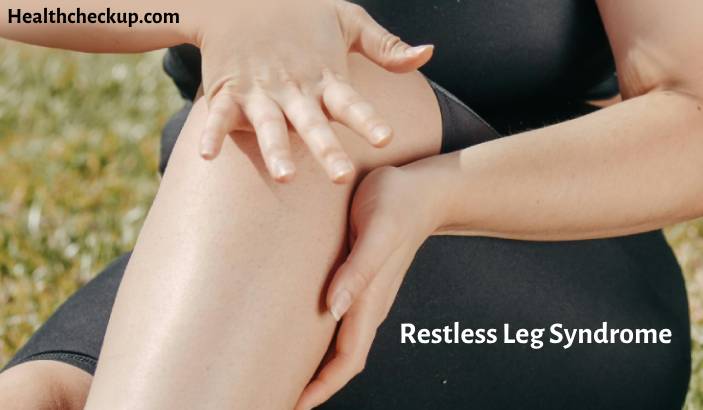The keto diet is wonderful as it raises your prospects of losing weight by depriving your body of carbs. But wait, this diet plan doesn’t come without side effects, some of which may seem quite bothersome, as you can read here. The most common keto side effects are induction flu, leg cramps, bad breath, constipation, reduced physical performance, and heart palpitations.
Increasing salt and water intake may help relieve most of these symptoms. It is generally recommended to increase the amount of daily water and salt intake even if you show no symptoms. Below discussed are the problems that tend to happen when you shift to a keto diet. We have also described how to resolve those problems, so read on.
Induction Flu
Induction flu is the most common side effect of being on low carb. It has flu in its name because it resembles a flu-like illness. Its symptoms include headache, nausea, feeling tired, lack of motivation, and lethargy. Sometimes, this condition may cause brain fog [1].
The good thing is that these symptoms do not linger for too many days. In most cases, it just takes a few days for induction flu to subside. The maximum time this problem can persist is two weeks.
That being said, you can remedy induction flu with a salt-water mixture, which is also a solution to many other side effects of the keto diet. The general recommendation in this regard is to add half a teaspoon of salt to a glass of water. One glass of this mixture can ward off induction flu within 15-30 minutes. You may need to repeat this process once or twice a day until you notice an improvement in your condition.
If you want to add some flavor, you may use broth or bouillon made from chicken, beef, or bone.
Another way to resolve or keep induction flu at bay is to add more protein or fats to your diet [2]. Remember, eating low-carb foods shouldn’t leave you feeling hungry and deprived. The best way to ensure this is to eat foods with fats and proteins in sufficient amounts. This way, you will feel more satisfied and energetic.
Leg Cramps
Although leg cramps are among the minor keto side effects, they can become pretty painful. It is not known why leg cramps occur after reducing the supply of carbs to your body. It may be due to the loss of minerals, especially magnesium.
Fortunately, it is easy to avoid leg cramps. Here is how:
- Be sure to drink plenty of water and get enough salt.
- You may take a magnesium supplement. The best way is to take three slow-release magnesium tablets for 20 days. After that, you can continue to take one tablet daily.
- The pain may become bothersome if the above steps are not helpful. At this point, you may need to increase your number of carbs. Although this solution will interfere with the objective you want to achieve with a low-carb diet, your cramps will be gone.
Constipation
Constipation is one of the most bothersome keto side effects. This is mainly due to your digestive system adapting to a significant decline in the level of carbohydrates it has been dealing with for all those years [3].
You can cure this problem through three simple steps.
- Increase your water intake and get enough salt in your daily diet. As you may already know, one of the significant reasons for constipation is dehydration, a common problem associated with the low-carb diet [4]. As a result, your colon starts absorbing more fluid than usual, leading to digestive wastes getting dry and hard. Drinking enough water can help compensate for that extra water absorption in the colon, preventing constipation.
- Your intestines need proper movement for regular waste expulsion. One of the best ways to keep your intestines moving is to take a sufficient amount of dietary fiber. Generally, the amount of daily fiber intake decreases significantly when you start eating fewer carbs. You can boost your fiber intake by eating non-starchy vegetables and some nuts. Another way to add carb-free fiber to your diet is to mix psyllium seed husks in water and drink the mixture [5].
- If the above steps are not helpful, you can consider taking 2-4 tablespoons of Milk of Magnesia. This will relieve constipation.
Bad Breath
When you are on a strict low-carb diet, you may experience a strong, fruity smell on your breath. This odor occurs due to acetone, a type of ketone. It is one of the signs that your body is burning more fats to produce ketones [6].
A higher level of acetone can also lead to several other odor changes in your body, such as when you sweat a lot while working out.
Not everyone on a strictly ketogenic low-carb diet gets keto breath. And the people who develop this smell have it for a week or two.
However, some people experience this smelly breath for a long duration. Fortunately, they can benefit from several solutions, some of which are discussed below.
- Ensure that your mouth never gets dry. Mouth dryness is due to saliva deficiency, which can lead to oral bacteria taking control of your mouth. This can cause bad breath. Adequate water intake washes away those bacteria, ridding your mouth of the foul smell.
- Brush your teeth twice daily. It will not cure keto breath, but that fruity smell won’t get mixed with other odors that you can prevent with good oral hygiene.
- Use a mouth freshener to reduce the overpowering keto smell.
- Wait out the keto breath, which generally lasts a week or two, according to several clinical experiences.
- You might want to reduce the degree of ketosis deliberately if your bad breath problem persists. This can be done by adding some carbs to your daily diet. Generally, a daily amount of 50-70 grams of carbs per day is enough to reduce ketosis to a point where the keto smell goes away.
Heart Palpitations
Another one of the keto side effects is a slightly elevated heart rate for the first few weeks. You may also feel your heart beating harder than usual. It is a normal situation and shouldn’t be a cause of concern unless you feel other symptoms like general weakness or chest pain.
Increasing your salt and water intake is one of the effective ways to get rid of this issue. However, if adding salt to water doesn’t work, then it means your symptoms are due to a more significant release of stress hormones [7]. This problem is generally temporary, as it is a sign of your body adapting to a lower-carb diet.
If your heart palpitations persist after the time they should have gone, you can increase the number of carbs in your diet. This may result in you shifting to a moderately low-carb diet from a strict low-carb diet.
You may also decrease your palpitations with the help of magnesium supplements. You may take 400mg of magnesium, provided you have a normal kidney function.
Reduced Physical Performance
You may experience a sharp decline in your physical performance during the few weeks of starting a low-carb diet. It may be due to two reasons [8].
- Lack of water and salts: Water and sodium deficiency can cause hindrance to physical performance. Drinking a large glass of water with salt mixed in it an hour before the workout may help maintain your physical performance.
- Change in the body’s fat-burning mechanism: Shifting to a low-carb diet deprives your body of a major energy source. This prompts your body to adapt to other energy sources, such as fat storage. This adaptation may take several weeks to several months. However, you will experience significant benefits once your body adapts to the low-carb diet.
Shifting to a low-carb high-fat diet may cause a decline in your physical performance at the start, but you will have long-term benefits afterward. In general, being on a low-carb diet allows you to enhance your performance during long-running sports and high-endurance exercises. Our fat stores are larger than glycogen stores. This means you can perform for long durations once you adapt to using body fat as your primary energy source.
The benefit of using fat as your energy source is that it helps you shed all those extra pounds, allowing you to have a leaner, stronger physique [9].
Wrapping Up
While the keto diet is great for building endurance and losing weight, this diet plan is not for everyone. More specifically, people with chronic health conditions like diabetes and heart disease might find it a bit more challenging to deal with some keto side effects.
Moreover, starting a keto diet changes the way the metabolic and other body systems work. This may change the effectiveness of the candidate’s current medication.
In general, the ketogenic diet does offer the opportunity for quicker weight loss. But, it is not without shortcomings. The best way to deal with this issue is to discuss everything with your doctor and follow their instructions.
References:
- Cliff J.d.C. Harvey, Grant M. Schofield, Caryn Zinn, Simon Thornley: Effects of differing levels of carbohydrate restriction on mood achievement of nutritional ketosis, and symptoms of carbohydrate withdrawal in healthy adults.
- Harcombe Z, Baker JS, DiNicolantonio JJ, et al Evidence from randomised controlled trials does not support current dietary fat guidelines: a systematic review and meta-analysis.
- Westman, E. C., Yancy, W. S., Jr, Mavropoulos, J. C., Marquart, M., & McDuffie, J. R. (2008). The effect of a low-carbohydrate, ketogenic diet versus a low-glycemic index diet on glycemic control in type 2 diabetes mellitus.
- Arnaud M. J. (2003). Mild dehydration: a risk factor of constipation?. European journal of clinical nutrition, 57 Suppl 2, S88–S95.
- Soltanian, N., & Janghorbani, M. (2019). Effect of flaxseed or psyllium vs. placebo on management of constipation, weight, glycemia, and lipids: A randomized trial in constipated patients with type 2 diabetes.
- Anderson J. C. (2015). Measuring breath acetone for monitoring fat loss: Review. Obesity (Silver Spring, Md.), 23(12), 2327–2334. https://doi.org/10.1002/oby.21242
- Cryer P. E. (1993). Adrenaline: a physiological metabolic regulatory hormone in humans?. International journal of obesity and related metabolic disorders : journal of the International Association for the Study of Obesity, 17 Suppl 3, S43–S68.








